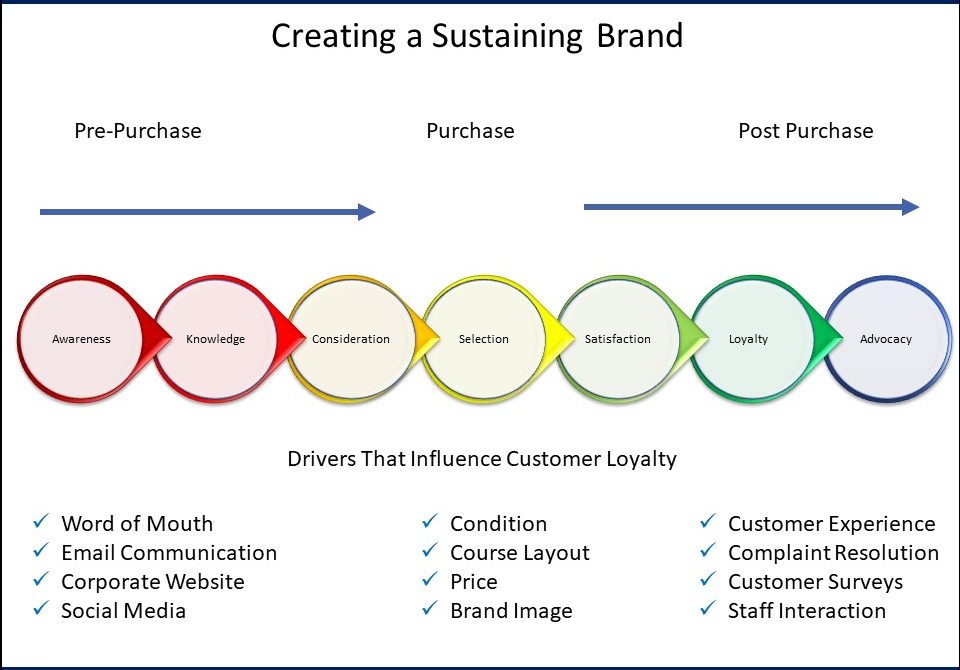
Excerpt from Chapter 8:
- Only 4% of dissatisfied customers voice complaints, but 91% never come back.
- 24% of customers have posted comments online.
- 80% of tweets regarding customer service are negative.
- It takes 12 positive experiences to make up for one negative one.
- It is six to seven times more expensive to acquire a new customer than it is to retain an existing one.
- The probability of selling to new customers is 5% to 20%. The likelihood of selling to existing customers is 60% to 70%.
- Loyal customers are worth ten times their initial purchase.
- 70% of a buying experience is based on how the customer feels they are treated.
- 75% are more likely to buy a brand that they follow on Twitter.
- 90% of customers will pay a premium for superior customer service.
If customer loyalty is essential, where it does start, how is it built, and how is it sustained?
Every customer touchpoint provides the opportunity to build brand loyalty over the entire process of pre-purchase, purchase, and post-purchase, as illustrated in the following figure:

You can’t shortcut the relationship. It takes time to develop customer frequency, duration, and interaction — all of which the customer controls and all of which combine to become loyal.
A golf course achieves customer loyalty not because of what you do (sell a green fee, cart, merchandise, food, and beverage) but because you establish an emotional connection to the customers through every step of the purchase cycle. Their loyalty
becomes a sphere of influence that gets your facility repeatedly chosen over the competition, not once or twice, but consistently.
Some may confuse the recent emphasis on customer loyalty with the evolution of social media and the connected customer. Simply stated, customer relationship management is a system for managing a company’s interactions with current and future customers.
All loyalty programs involve points, discounts, rebates, or privileges. While these retention/reward programs may increase transaction frequency, it is essential to differentiate between rewards programs, which stimulate additional purchases, and loyalty programs, which often cause the customer to become a promoter of the company, regardless of spending habits.
Author: JJ Keegan, Envisioning Strategist and Reality Mentor. Click here
© 2020, JJKeegan+


